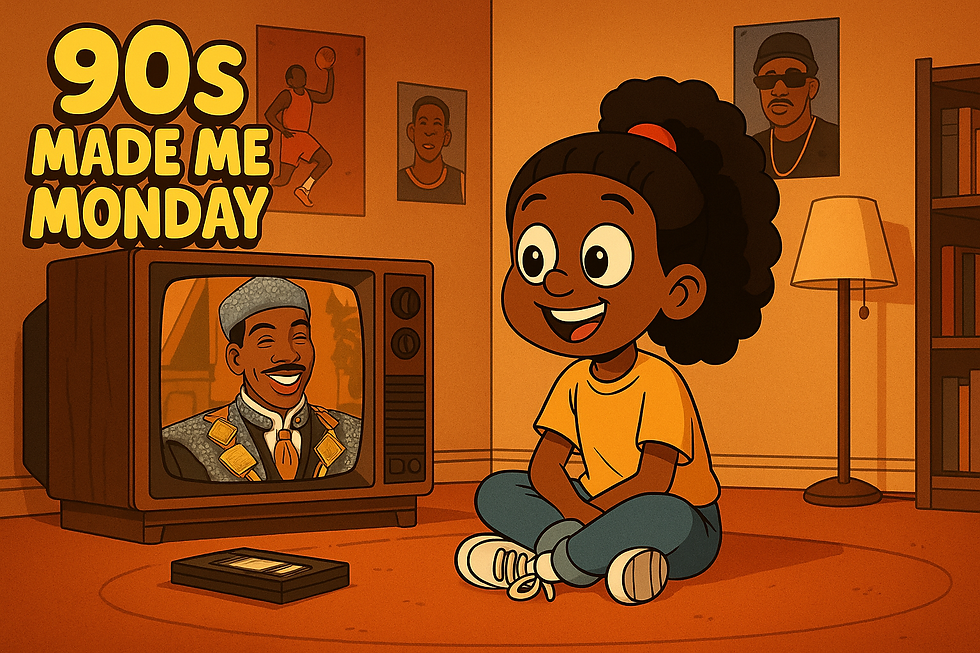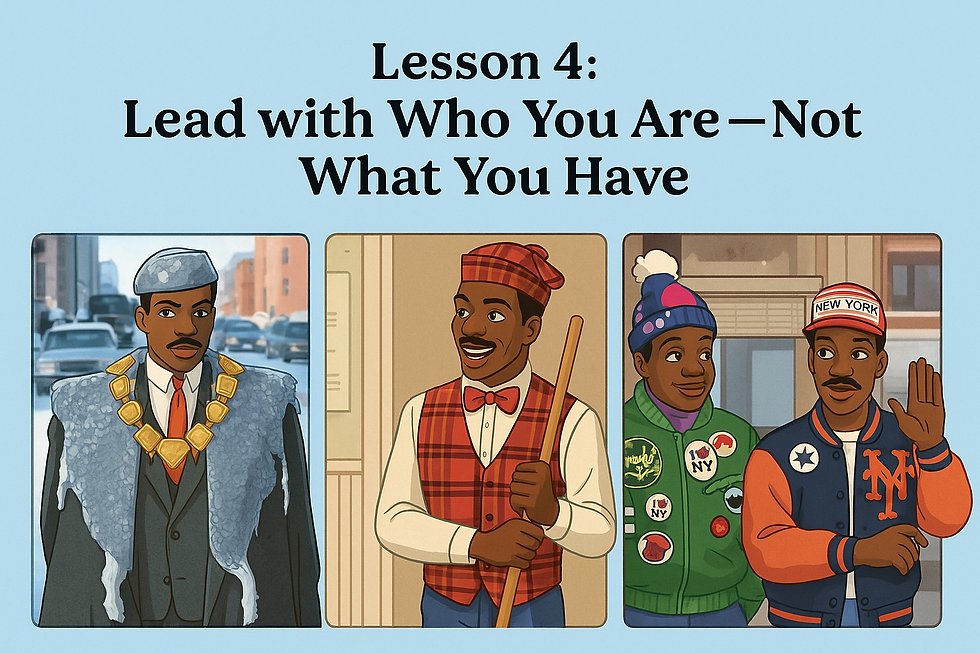Coming to America Raised Me: Love, Legacy & Black Excellence in a VHS Tape
- Juli "Candi" Long

- Jun 9
- 4 min read
90s Made Me Monday

I can’t remember the first time I saw Coming to America — not because it wasn’t memorable, but because I was so young that it instantly became part of my personality. I was maybe four or five, quoting every scene like I was auditioning for a remake. And although I definitely had no business knowing those club scene monologues by heart, my daddy loved it. He got a kick out of watching his baby girl deliver lines from memory, especially the wild ones. I was Joan of Arc in my former life, okay?
Over time, Coming to America went from just being a funny movie I watched on repeat to becoming one of the cultural staples that shaped how I see love, identity, community, and even how I plan events today. So for this 90s Made Me Monday, I’m giving the royal treatment to a movie that gave me more than laughs — it gave me lessons.
Lesson 1: Choose Real Love — Not the Yes Woman or Yes Man

At its core, Coming to America is a love story — but not the kind we usually got in the 80s and 90s. Prince Akeem had it all: money, power, status… and a woman hand-picked to worship the ground he walked on. But he didn’t want that. He wanted connection. He wanted a partner who had her own voice.
Lisa wasn’t just beautiful. She was smart, ambitious, and held her own. That stuck with me. Even as a child, I knew: I didn’t want to be chosen just because I was “trained” to please. I wanted someone who saw me. Who respected me enough to court me, listen to me, and meet me where I was.
That movie taught me early on to be your own woman. And that a real man — the right man — would want you, not a trained puppy. That lesson stuck. And to this day, I expect to be courted, pursued, and seen for the fullness of who I am.
Lesson 2: The Joy of Satire — And Oha Stole the Show

Listen. Every time Oha clapped to summon the servants, or belted out “She’s Your Queeeeeen to beeeee,” I was rolling. As a kid, I might not have fully understood all the satire, but I knew it was hilarious.
To this day, I still laugh like it’s my first time. Oha was the unsung MVP of that movie, and the fact that he sang with such conviction still sends me every time. And yes — I do reenact the clapping scene at least once a year in my house. That movie never gets old.
Lesson 3: Black Excellence at Home — Before It Was Trending

Watching Coming to America as a little Black girl growing up in a middle-class family, I saw reflections of something familiar — and something aspirational.
My parents were married. We lived in a cozy starter home with a backyard, a garage, and a basement with a bar. My grandfather had one too and threw his own parties. My mom came from a two-parent home. My granddad was a chef and preacher. My grandmother was a cosmetologist. I saw Black excellence in real life — not flashy, not bougie, but solid. Grounded. Striving.
So when Mr. McDowell threw that fancy party at his home — with valet drivers, red jackets, and champagne trays — it blew my little mind. It felt like Black new money elegance. That party was one of the first moments I saw an event and thought, “I want to do that one day.”
And now? I host my own events. I build community, throw celebrations, and create moments with meaning — all sparked, in part, by a fictional fast-food mogul throwing a party for royalty in his living room. That scene planted a seed.
Lesson 4: Lead with Who You Are — Not What You Have

One of the most powerful things Prince Akeem did was hide his title — not out of shame, but because he wanted to be seen. Not as a prince. Not as the heir to Zamunda. But as a man.
Even as a kid, I vaguely understood: he didn’t want gold diggers. But as a grown woman who's lived life, built a name, and found herself in more than a few “you only here for the benefits” relationships? I get it on a much deeper level now.
Because it’s not just celebrities or royalty who deal with that. Sometimes it’s people like me — a woman with a brand, a platform, a little bit of influence. People don’t always want you… they want your access. Your rooms. Your connections. Your stage. And it’s not just romantic — it can show up in friendships, business deals, even family.
Prince Akeem’s choice to downplay his status taught me early on that your worth isn’t in what you have — it’s in who you are when no one’s watching. And sometimes, the most genuine relationships are built when people love you before they know the crown you carry.
Final Thoughts: A VHS That Still Feels Royal
I’m 40 now, and Coming to America is still in heavy rotation. Still funny. Still brilliant. Still inspiring. It’s more than a movie to me — it’s a blueprint, a memory lane, a cultural love letter.
It reminded me that love should be real, laughter should be loud, and our stories — Black stories — deserve luxury, romance, satire, and soul.
So yeah. Coming to America didn’t just raise Prince Akeem. It raised me too.







makes me want to watch Coming to America again.